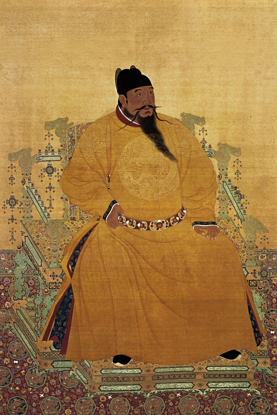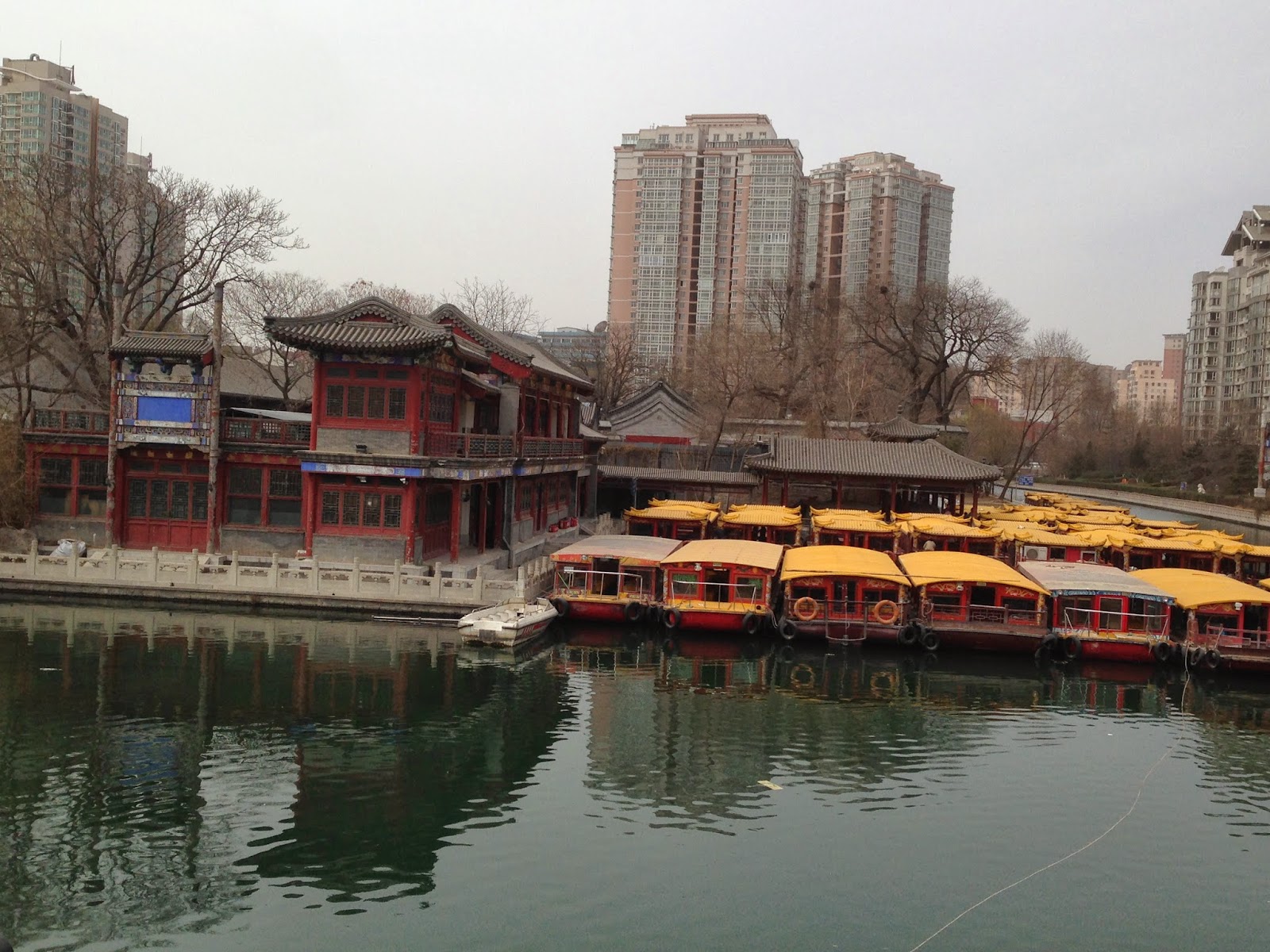To better understand the turbulent developments of modern Japan, it is helpful to understand the backdrop of over two centuries of Tokugawa feudal rule. This period is most characterized by harsh laws and restrictions placed upon physical and social mobility, and the absence of warfare. While the Emperor lived in the imperial city of Kyoto and was revered as god, he had no military power. Japan was ruled by a dictator called a Shogun. Let's begin with a look at the three Great Unifiers of Japan whose conquests led to the Tokugawa Shogunate. How did they gain legitimacy and how did they maintain power?
 |
| Great Unifier #1 |
In 1573 after a long period of civil war where power struggles were carried out amongst diamyo with samurai armies, much of Japan came under the control of a ruthless and passionate landlord, Oda Nobunaga. He became the first of three great military dictators. Realizing that legitimate authority could not be maintained merely through force, he promoted himself as a divine ruler. Nobunaga went to war against popular religious sects, killing tens of thousands of rivals, and demanding that friend and foe worship him as a deity. He assured his vassals that their sacrifice in this life would benefit them in the next. He presented himself as the embodiment of tenka which meant "under heaven" and referred to the realm of Japan. His loyal vassals pledged, "for the tenka (Japan), for Nobunaga." However, Nobunaga stopped short of seeking the title of Shogun because he refused to become subordinate to the Emperor who granted this ancient military title. Shogun literally meant "Commander-in-Chief for quelling the barbarians." Though historians have called him "the magnificent savage," Nobunaga also developed political institutions that his successors found beneficial. In the end, after a military defeat, Nobunaga committed ritual suicide. His loyal retainer, Toyotomi Hideyoshi, became the second Unifier of Japan.
 |
| Great Unifier #2 |
While Toyotomi Hideyoshi (nicknamed 'the Bald Rat' by his wife and 'the Monkey' by his contemporaries) continued the unification of Japan, he also promoted himself as a deity. He even hosted the Emperor (believed to have descended from the sun goddess) as an equal in his Kyoto castle! Hideyoshi established festivals and began durable bureaucratic traditions. Though unsuccessful, he called for a national campaign to conquer Ming China via an invasion of Korea. Finally, he arranged for the Great Imperial Shrine to be built in Ise upon his death in order to honor him as deity. Though his health was failing, he was murdered by one of his generals allied with Ieyasu Tokugawa. Oh, how his successor resented the Great Shrine and sought to wipe it out! In Nikko we saw the gaudy results of this attempt to adumbrate (overshadow) his predecessor. More on that in a moment. (photos below)
 |
| Great Unifier #3 |
The third Unifer, Ieyasu Tokugawa, was a harsh ruler. Feared on the battlefield, he won final victory over forces loyal to Hideyoshi's son in the famous battle of Sekigahara in 1600. Ieyasu was respected for his incredible patience as a tactician. Once Ieyasu put all diamyo directly under his control and issued the final expulsion (and execution) of all known Christians in 1614, his reign went unchallenged. Taking the title of Shogun from the Emperor, he placed the Emperor under his control financially and militarily. After two years as Shogun and still in good health, Ieyasu "retired", appointing his son heir to the throne. However, Ieyasu continued to rule from behind the scenes, increasing Japan's social rigidity and reducing the amount of control people generally had over their own lives. With the exception of the short, bloody Shimabara Rebellion in 1637-1638 (caused largely by over-taxation and famine), Japan experienced a two hundred
year period of peace and stability. All wisdom was said to come from Ieyasu.
"Life is like a long journey with a heavy burden." -Ieyasu Tokugawa
It was believed that the order Ieyasu brought to Japan was rooted in the cosmos. Three core beliefs legitimized Tokugawa rule:
1. Hierarchy is natural and just (fair).
2. Great virtues include selfless service and acceptance of one's place in the hierarchy.
3. Tokugawa Ieyasu is the source of all wisdom.
For Review: There is a famous saying that will help you remember these three Great Unifiers:
Nobunaga, Hideyoshi and Tokugawa were watching a cuckoo bird waiting for it to sing, but the bird wouldn't sing. Nobunaga says "Little bird, if you don't sing I will kill you." Hideyoshi says "Little bird, if you don't sing, I'll make you sing." Then Tokugawa Ieyasu says to the bird "Little bird, if you don't sing I will wait for you to sing."
 In accordance with Ieyasu's will, his son and grandson built the ostentatious Toshogu Shrine in Nikko. (Today Nikko is about a two-hour train ride north of Tokyo.) Just as I did, tens of thousands of visitors stroll through the shrine each year viewing the brilliant colors and exceptional artistry.
Here Ieyasu Tokugawa is enshrined and his remains are entombed. During the Edo period, the Tokugawa shogunate conducted stately processions from the capital city of Edo to Toshogu Shrine in Nikko. Annually the shrine holds spring and autumn festivals reenacting these processions. They are called "processions of a thousand warriors."
In accordance with Ieyasu's will, his son and grandson built the ostentatious Toshogu Shrine in Nikko. (Today Nikko is about a two-hour train ride north of Tokyo.) Just as I did, tens of thousands of visitors stroll through the shrine each year viewing the brilliant colors and exceptional artistry.
Here Ieyasu Tokugawa is enshrined and his remains are entombed. During the Edo period, the Tokugawa shogunate conducted stately processions from the capital city of Edo to Toshogu Shrine in Nikko. Annually the shrine holds spring and autumn festivals reenacting these processions. They are called "processions of a thousand warriors."
 |
| "See no evil, hear no evil, speak no evil." |
Below is the most famous of eight panels referred to as the "Three Monkeys." Each panel symbolizes part of the life cycle of humanity. The lesson here is that a properly instructed baby monkey will grow up to become a good parent and the cycle of birth-life-death will continue indefinitely.
This panel admonishes youngsters to live well, to "see no evil, hear no evil, speak no evil." (The philosophical origins of this saying may date back to the 2nd-4th century BC.)























































